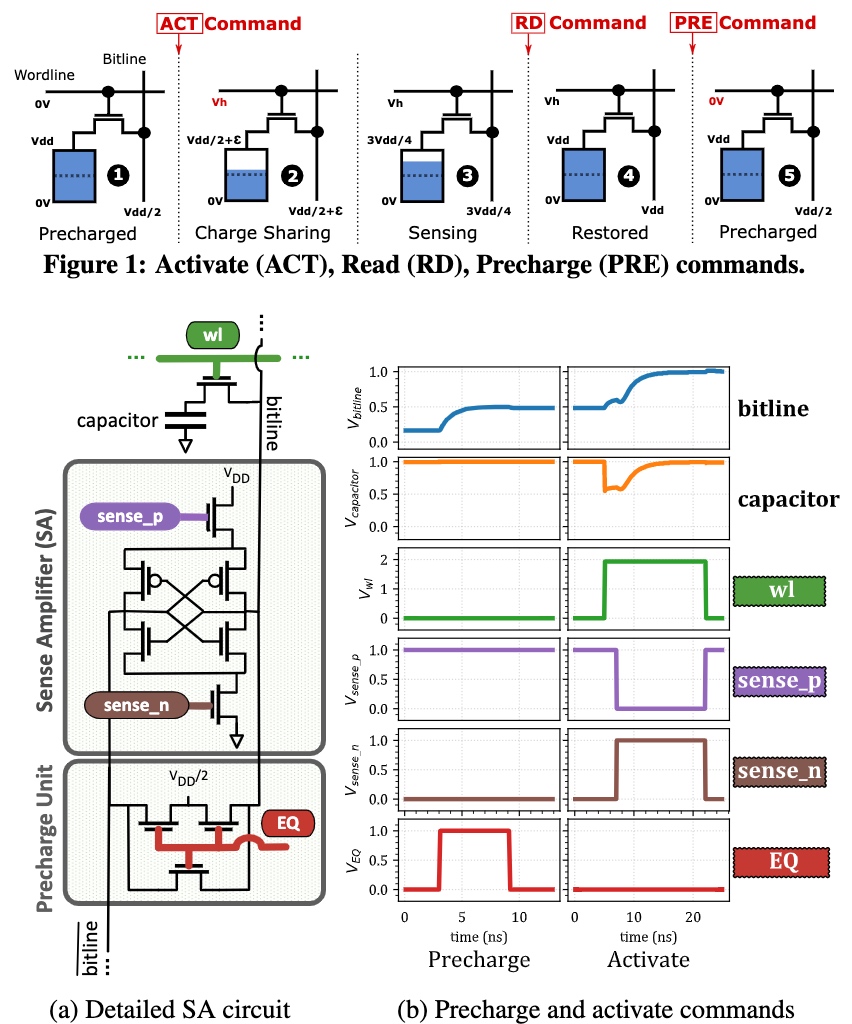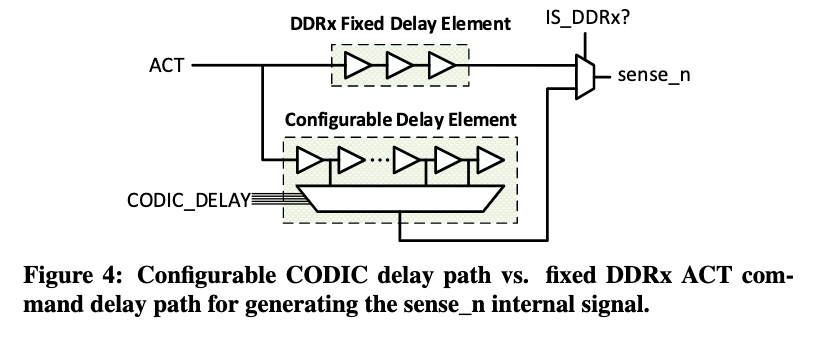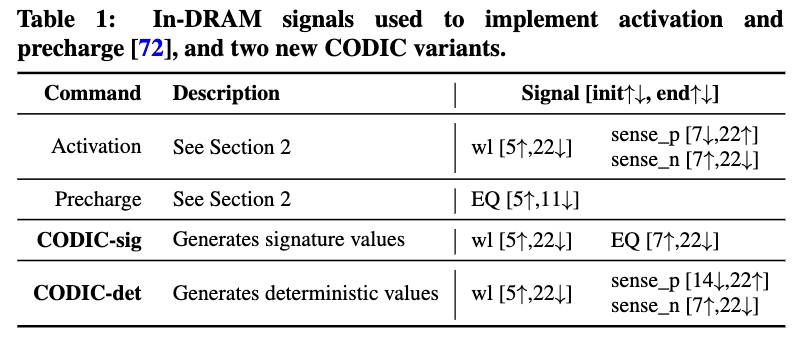Haocong 学长有 contribution 的 work,其他作者来自ETHz,UIUC,NUDT。把一些PIM的工作low overhead的通过HW的方法让普通DRAM可以被修改、监控、优化。

CODIC design


CODIC-sig generates signature values that depend on process variation by sensing and amplifying aDRAM cell that we set to the precharge voltage (Vdd/2). Sense amplifiers detect minor voltage differences above or belowVdd/2.
CODIC-sig-opt is based on the key observation that CODIC-sig can set the voltage of the DRAMcapacitor toVdd/2very quickly.
CODIC-det generates deterministic values. The key idea is to drive the cell to a deterministic value by activating the two signals that drive the SA (sense_n and sense_p)with a delay between them. Depending on which of the two signals triggers first, the generated value is 0 or 1.
Substrate
Enable the fine-grained control of fundamental DRAM internal circuit timings that control key basic components in the DRAM array(wordline, sense amplifier, precharge logic)
Applications like cold start attack prevention, Physical Unclonable Function.
Physical Unclonable Function
The hardware primitive maps a unique input (i.e., challenge) to a unique response. It can start with Challenge-Responsepair (CR pair). The address and size of a memory segment as the only parameters that define a challenge.
- It has a fast evaluation time due to its ability to control internal DRAM timing signals.
- It does not require any filtering mechanisms because it provides highly stable out-put values.
- It has state-of-the-art resilience to temperature changes.
- The latency is good. All DRAM cells are always precharged toVdd/2for generating a PUF response, independently of their original value.
Cold start attack prevention
The attacker first disables power to the computer containing the victim DRAM and then transfers the DRAMto another system that can read its content.
Previous work 1. using Enclave to encrypt the Memory, 2.scramble the data in the memory controller, 3. Trusted Computing Group resets the DRAM content upon power-off.
The CODIC solution is self-destruction using sig or det operation on boot, it will first carry out this two logic to refresh all the data on row buffer.

